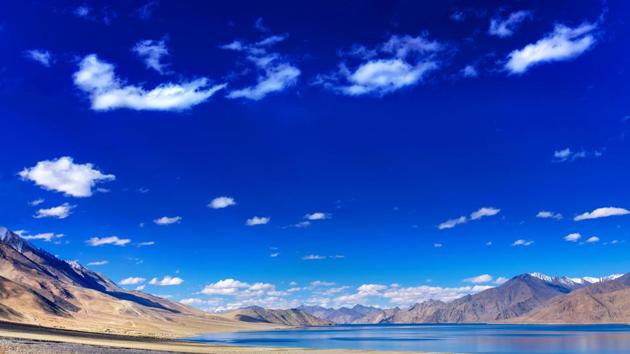Leh must not become another Shimla
The people of the brand new Union Territory are happy. But they should be apprehensive too. The Indian tourist army may ravage the ecologically fragile region
JT Namgyal, the Bharatiya Janata Party’s (BJP) MP from the two-district Ladakh Union Territory (UT), must be happy man. Soon after his forceful arguments in the recently concluded Parliament session that Ladakh’s political aspiration, development, language, and culture had been curtailed by Article 370, and the Congress’ pampering of the Kashmir Valley, comes the good news that the Centre is planning a raft of initiatives to shore up the local economy. Reports suggest that Leh could soon get the Smart City tag.

The desire for development is an emotive issue across the country, and the allocation of resources can get intensely competitive. If Namgyal blames the Sunni-majority Kashmir Valley for cornering maximum central funds earmarked for the development of the region, in the Shia-majority Kargil (one of the two districts of the new UT), people have a different take on their lack of development. “We have been shortchanged by both Leh and Srinagar. Tourists don’t come to Kargil from Srinagar because of frequent shutdowns. They don’t come from Leh either because we don’t have adequate facilities for them,” a Kargil-based tour operator told me when I visited the district on an assignment last year.
“We have Zanskar, Mushkoh valley… yet no one comes here because the BJP wants to pamper Buddhist-majority Leh with facilities,” he had complained. “We have been demanding the restarting of the Kargil airport, but Delhi is not moving ahead”. (His wish will hopefully come true this year). Now, doesn’t this grievance sound similar to what Namgyal accused the Valley of during his Parliament speech?
While Leh and Kargil have divergent views on the UT status (there have been protests in Kargil against the move), they are united on one aspect. Both want tourists to fuel their economy. While all efforts must be done to meet their aspirations, the people of Ladakh must also realise that tourism can be a double-edged sword. For instance, look at Shimla and Dharamsala in Himachal Pradesh. Or, Haridwar and Srinagar in Uttarakhand. Reckless tourists, greedy locals and corrupt administrations are all responsible for the Himalayan mess (water shortage, plastic menace and air pollution) in these places.
Leh, if not Kargil, is already afflicted by the tourist boom, and it could end up being the next Shimla, if proper safeguards are not taken. A paper Urbanisation and socio-ecological challenges in high mountain towns: Insights from Leh (Ladakh) by Juliane Dame et al of the Heidelberg Center for the Environment, Germany, gives a detailed assessment of the uncontrolled urbanisation of Leh.
According to the study, between 1969 and 2003, the number of new buildings constructed was 9,400. The pace has gathered so much that the town added the same number between 2003 and 2017. Leh is also facing a drinking water scarcity; tube wells are running dry as groundwater level is falling quickly across Ladakh. The famous water bodies of this high altitude cold desert, such as Indus River and Pangong Lake, are littered with plastic. Then there is air pollution, thanks to the increasing number of tourist vehicles.
When I called a few people in Ladakh after it was declared a Union Territory, they said they were happy, but some were cautious as well. Many fear that “outsiders” will wreck not just the environment, but their society too. “Businesses don’t value these things, do they?” a Ladakhi who runs a community museum told me. She said she was scared to hear that the Maharashtra government is planning to buy land to start a resort in Leh. “I think the central government should declare this as a restricted tribal area, and ensure outsiders don’t buy land here like they have in Spiti Valley.”
Now, didn’t we hear a similar refrain somewhere else too, in the pre-Union Territory days?




